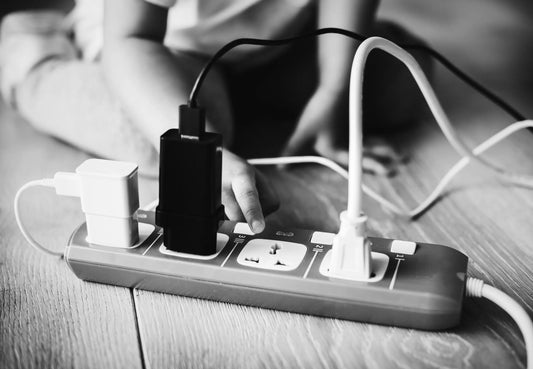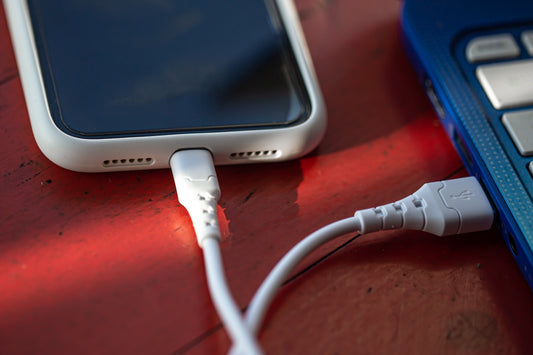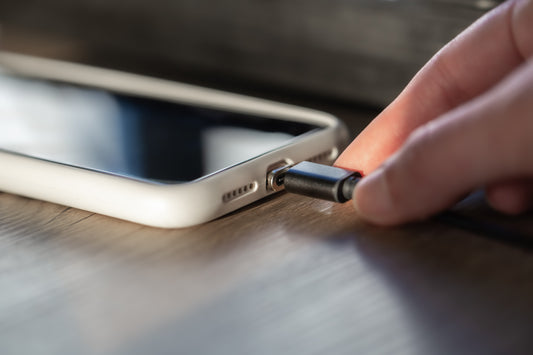Keeping our gadgets charged is a high responsibility in our increasingly connected society, where our smartphones, tablets, and laptops are essential. We are all familiar with the annoyance of a low battery warning, but technology has advanced to provide a fix: quick charging. However, what is fast charging actually, and how is it different from regular charging? To assist you understand the differences and choose the best charging option for your requirements, we go into great detail about both charging methods in this article.
Understanding Standard Charging:
The standard way of recharging your device's battery is known as standard charging, sometimes referred to as normal or slow charging. The charger and cord that came with your smartphone are normally used with this technique; these are meant to give a certain quantity of power. What you should know about normal pricing is as follows:
Charging Speed: As the name implies, standard charging refers to the rate at which the majority of devices are charged. For smartphones, it generally gives a power output of 5 watts (W).
Time Required: While conventional charging periods might vary, they are often longer. Your smartphone may require many hours to charge completely, especially if its battery is big.
Compatibility: The majority of gadgets may be charged using standard methods thanks to the usage of widely used standards like USB-A and Micro-USB.
Battery Health: Slower charging is frequently regarded as being kinder on a device's battery. Less heat is produced, which may improve the long-term battery health.
The Rise of Fast Charging
On the other hand, fast charging is a considerable improvement in charging technology. It is intended to shorten the amount of time needed to charge your smartphone while keeping the battery in good condition. The following distinguishes rapid charging:
Charging Speed: Depending on the technology and device, fast charging produces a greater power output that generally ranges from 18W to 100W or more. As a result, charging times are considerably quicker.
Time Required: With fast charging, you may anticipate that your smartphone will charge to a significant level much more quickly. For instance, several smartphones can use rapid charging to get from 0% to 50% charge in around 30 minutes.
Compatible: Different brands use different fast charging technology. Common standards include Power Delivery (PD), Qualcomm Quick Charge, and specialized technologies like OnePlus Dash Charge and VOOC. Both the charger and the device must be compatible.
Battery health: Modern devices include thermal management technologies to reduce this, even if fast charging might produce more heat owing to the greater power output. Fast charging solutions are also intended to safeguard battery health, frequently by reducing the charging rate as the battery nears capacity.
Choosing Between Fast Charging and Standard Charging
Your particular demands and circumstances will determine whether you choose rapid charging or normal charging:
Speed vs. Convenience: Fast charging is the best option if you need a rapid power boost and don't have much time. It's ideal for charging your device just before leaving.
Battery Longevity: Sticking with normal charging may be better if you are worried about the long-term health of your batteries and don't mind slower charging times. It causes the battery less stress and heat.
Compatibility: Make sure your smartphone is compatible with the rapid charging method you intend to employ. Fast charging might not function on some devices unless you use a special charger or connection.
Accessories: If your gadget is suitable, buying a fast charger and cord can be a good investment. But bear in mind that there can be an extra charge for these items.
Environmental Impact: Slower charging typically consumes less energy, which can contribute to reduced environmental impact.
Conclusion: Finding the Right Balance
Both rapid charging and regular charging have a place in the hectic digital world. Your immediate demands, device compatibility, and concerns for long-term battery health will determine which of the two you should choose.
When you need your smartphone to be ready quickly, fast charging is a game-changer, while regular charging offers a more slow, gentle approach. The option that best suits your lifestyle and keeps your gadgets charged when you need them most is ultimately the best option.





